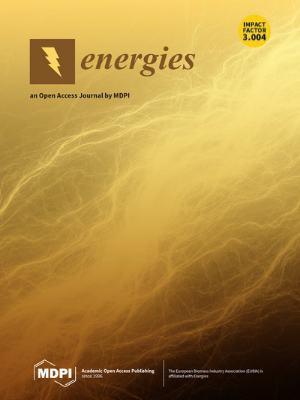Study of the Interaction of a Hydraulic Fracture with a Natural Fracture in a Laboratory Experiment Based on Ultrasonic Transmission Monitoring
IF 3.2
4区 工程技术
Q3 ENERGY & FUELS
引用次数: 0
Abstract
This paper presents the results of experiments on the study of a hydraulic fracture’s interaction with a preexisting fracture. A distinctive feature of the conducted experiments is the ability to use ultrasonic transmitting monitoring to measure the fracture propagation and opening simultaneously with the pore pressure measurements at several points of the porous saturated sample. It allows us to obtain the pressure distributions at various experiment stages and to establish a relation between the pore pressure distribution and hydraulic fracture propagation and its interaction with macroscopic natural fractures. The possibilities of active ultrasonic monitoring have been expanded due to preliminary calibration experiments, which make it possible to estimate the fracture opening via attenuation of ultrasonic pulses. The experiment demonstrated the most complex scenario of fracture interactions when a hydraulic fracture intersected with a natural fracture and the natural fracture in the vicinity of the intersection was also opened. The additional complications arise from fracture arrangement: the hydrofracture was normal with respect to the base plane, while the natural fracture was slanted. This led to gradual growth of the intersection zone as the hydrofracture propagated. The experiments show that the natural fracture limited the fracture’s propagation. This was caused by the hydraulic fracturing fluid leaking into the natural fracture; thus, both the hydraulic fracture and natural fracture compose a united hydraulic system.基于超声波传输监测的实验室实验中水力压裂与天然压裂的相互作用研究
本文介绍了研究水力压裂与原有裂缝相互作用的实验结果。所进行实验的一个显著特点是,在多孔饱和样品的几个点上,使用超声波发射监测仪与孔隙压力测量仪同时测量裂缝的传播和张开。这使我们能够获得不同实验阶段的压力分布,并建立孔隙压力分布与水力裂缝扩展及其与宏观天然裂缝相互作用之间的关系。由于进行了初步的校准实验,主动超声波监测的可能性得到了扩展,从而有可能通过超声波脉冲的衰减来估计裂缝的开口情况。当水力断裂与天然断裂相交,且相交处附近的天然断裂也被打开时,该实验展示了断裂相互作用的最复杂情况。额外的复杂性来自于裂缝排列:水力压裂相对于基面是正常的,而天然裂缝是倾斜的。这导致交汇区随着水力断裂的扩展而逐渐扩大。实验表明,天然裂缝限制了裂缝的扩展。这是因为水力压裂液渗入了天然裂缝;因此,水力压裂和天然裂缝构成了一个统一的水力系统。
本文章由计算机程序翻译,如有差异,请以英文原文为准。
求助全文
约1分钟内获得全文
求助全文
来源期刊

Energies
ENERGY & FUELS-
CiteScore
6.20
自引率
21.90%
发文量
8045
审稿时长
1.9 months
期刊介绍:
Energies (ISSN 1996-1073) is an open access journal of related scientific research, technology development and policy and management studies. It publishes reviews, regular research papers, and communications. Our aim is to encourage scientists to publish their experimental and theoretical results in as much detail as possible. There is no restriction on the length of the papers. The full experimental details must be provided so that the results can be reproduced.
 求助内容:
求助内容: 应助结果提醒方式:
应助结果提醒方式:


